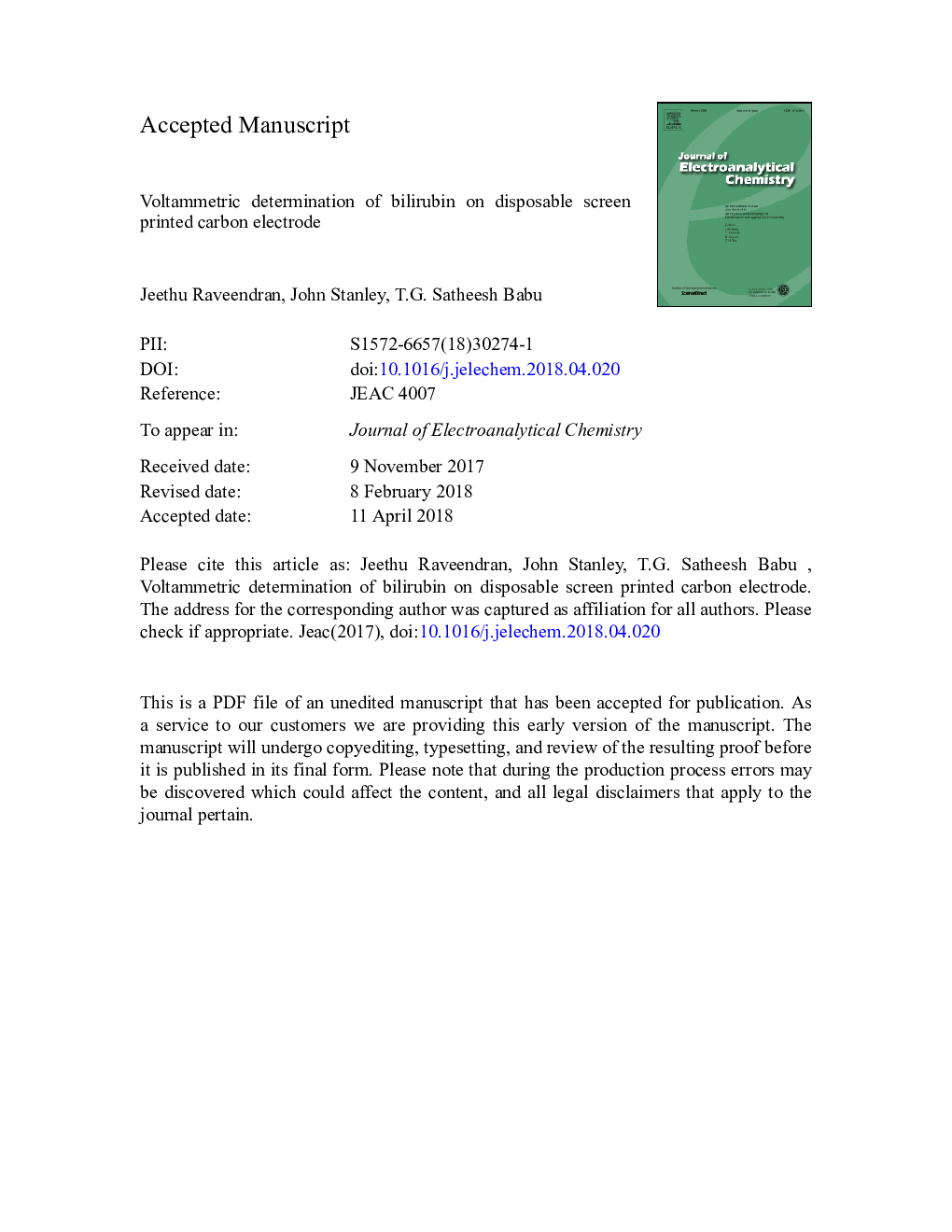| Article ID | Journal | Published Year | Pages | File Type |
|---|---|---|---|---|
| 6661755 | Journal of Electroanalytical Chemistry | 2018 | 23 Pages |
Abstract
Disposable screen printed carbon electrodes have been developed for the quantitative determination of free bilirubin. The electrodes were fabricated using graphite carbon ink and characterized with microscopy, spectroscopy and diffraction studies. The carbon ink for printing is made of graphite nanoparticles of size around 50â¯nm. Electrochemical oxidation of bilirubin was carried out voltammetrically in Trizma buffer of pHâ¯8.5. The sensor showed a dynamic detection range of 5-600â¯Î¼M and a sensitivity of 95â¯Î¼AμMâ1â¯cmâ2. The SPCE showed superior performance than many of the reported sensors in terms of dynamic range, sensitivity and oxidation potential. Molecules such as ascorbic acid, uric acid, dopamine, glucose, creatinine and ethanol were tested using SPCE and found to be non interfering with the detection of creatinine in the physiological conditions. The sensor was tested using bilirubin spiked serum samples and found that it is giving response to free bilirubin. The sensor was also used to study the affinity of free bilirubin to albumin and displacement of bilirubin from albumin by ibuprofen.
Related Topics
Physical Sciences and Engineering
Chemical Engineering
Chemical Engineering (General)
Authors
Jeethu Raveendran, John Stanley, T.G. Satheesh Babu,
